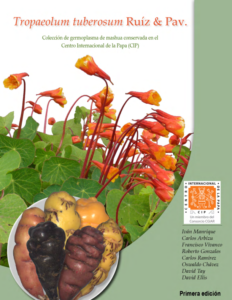Mashua (Tropaeolum tuberosum)
The name is derived from the Quechua word maswa or mashwa. The plant is a perennial closely related to the common garden flower nasturtium. Tuber color and shape vary considerably, and contain high levels of isothyocyanates (glucosinolates) which are well known for their insecticidal, nematocidal, and medicinal properties. The tubers of mashua are rich in starch, fiber, ascorbic acid, anthocyanin (purple mashuas), and b-carotene (yellow mashuas). Mashua is traditionally used by women to depress libido when she suspects her husband is cheating.



